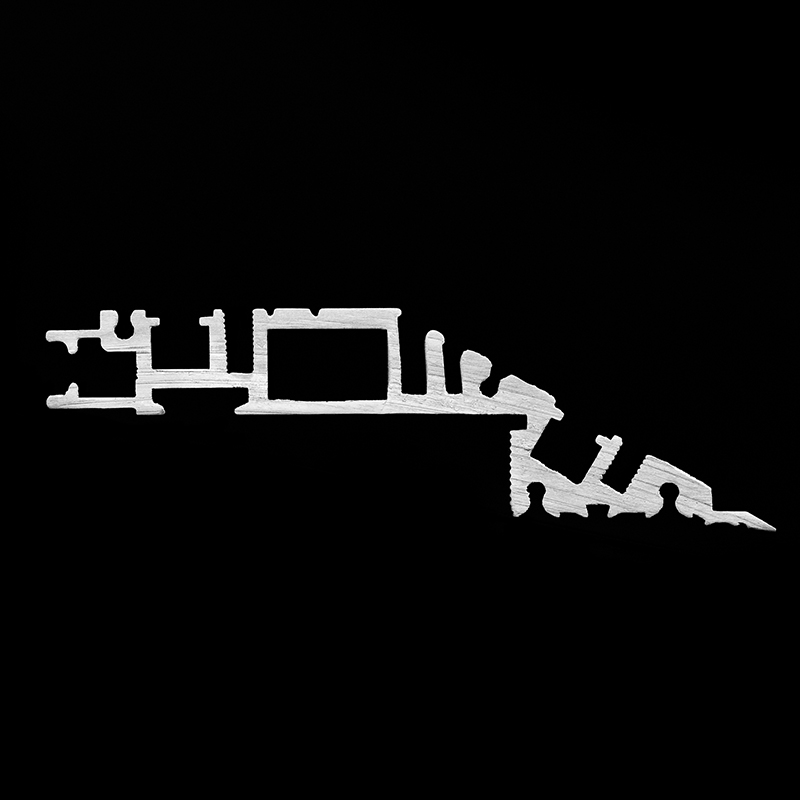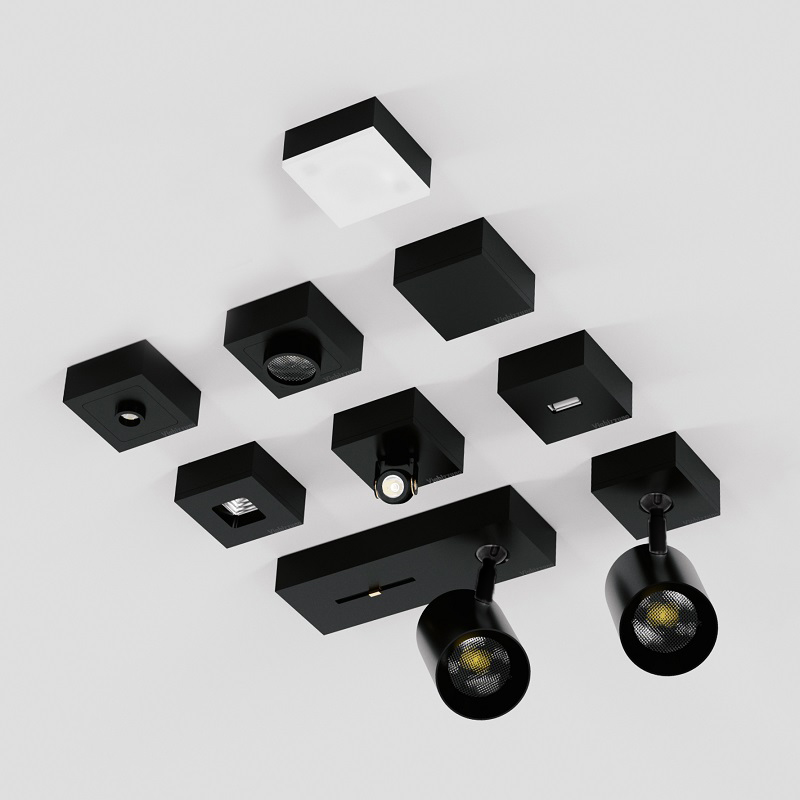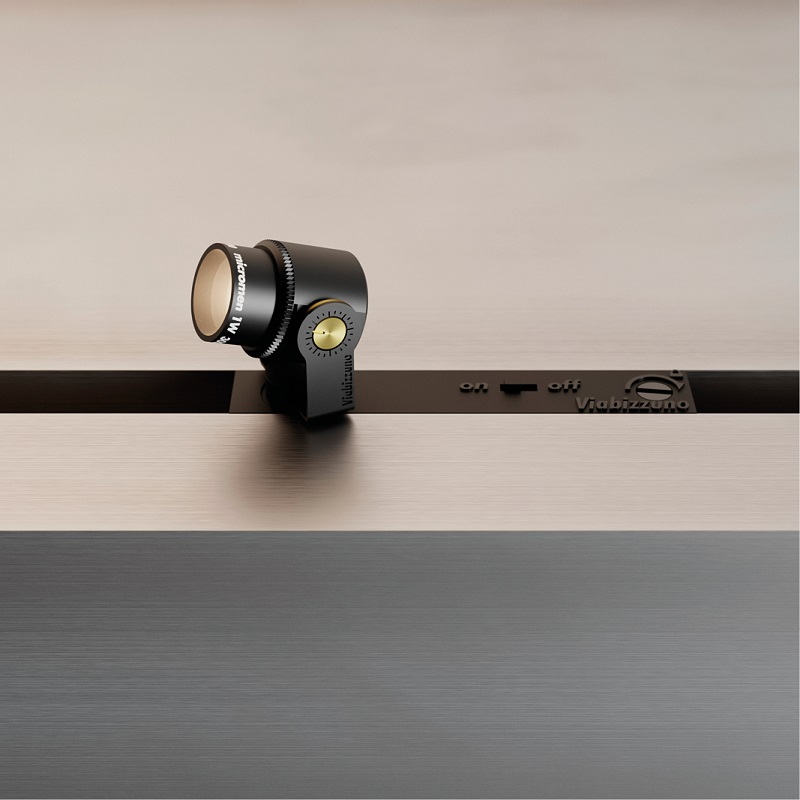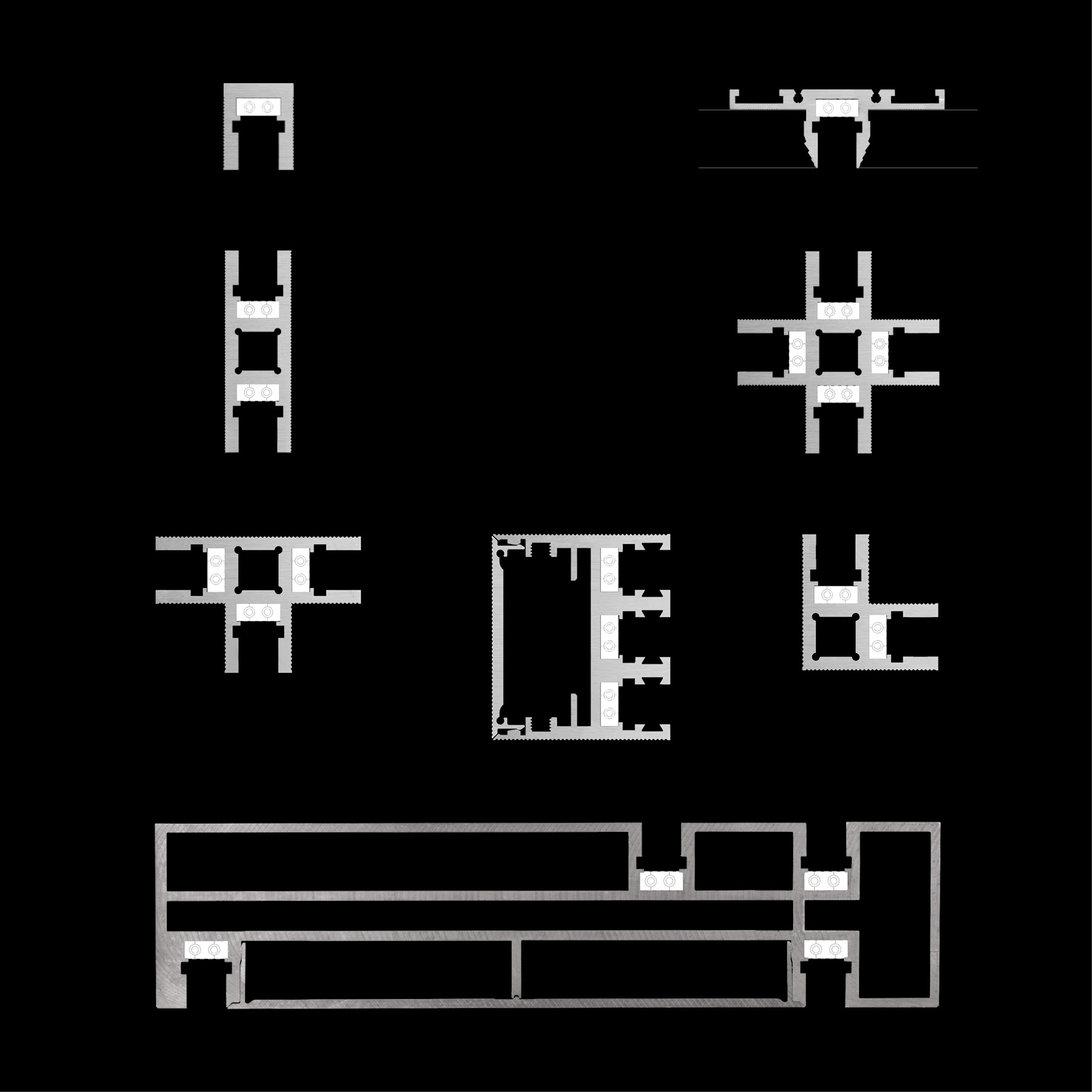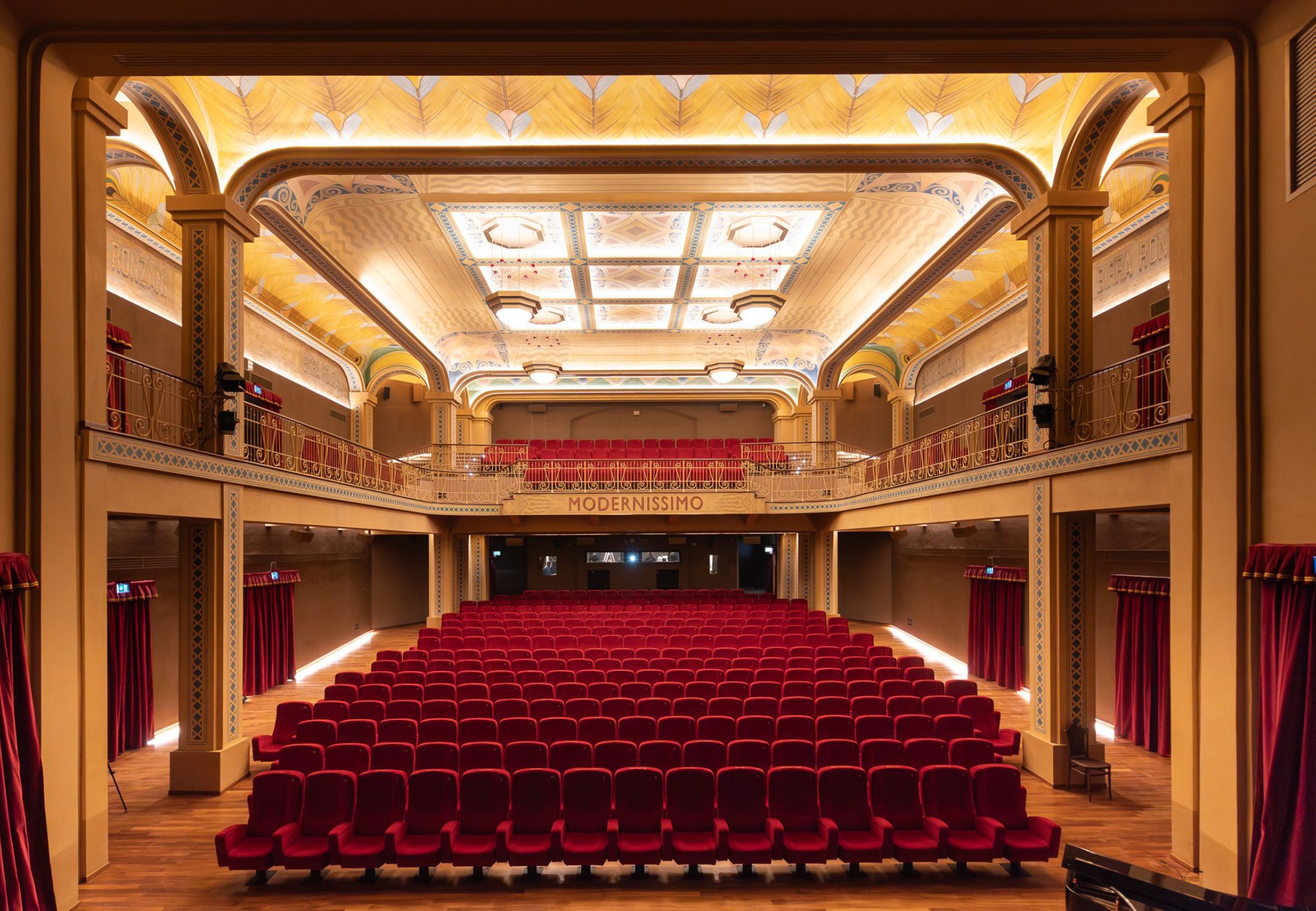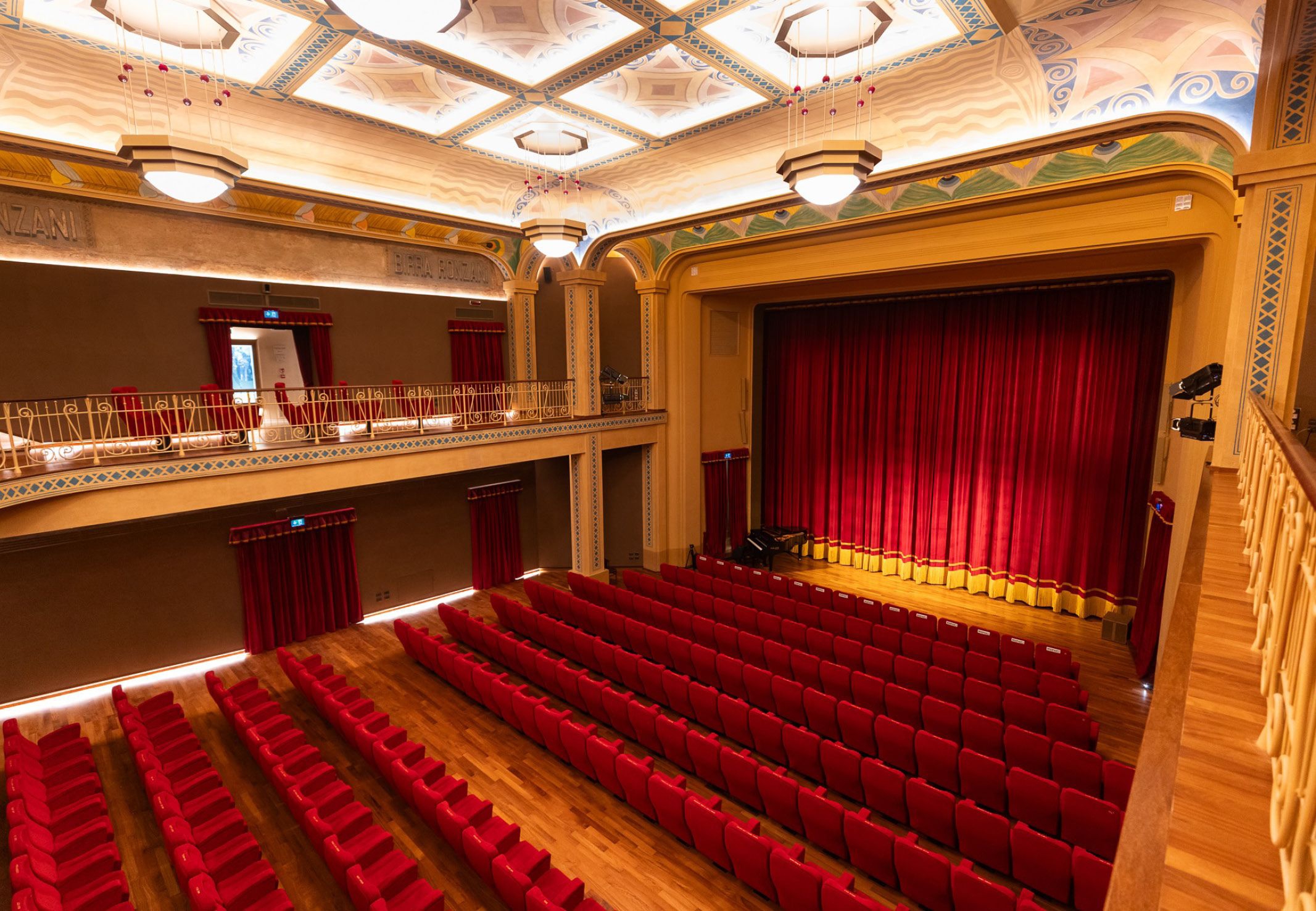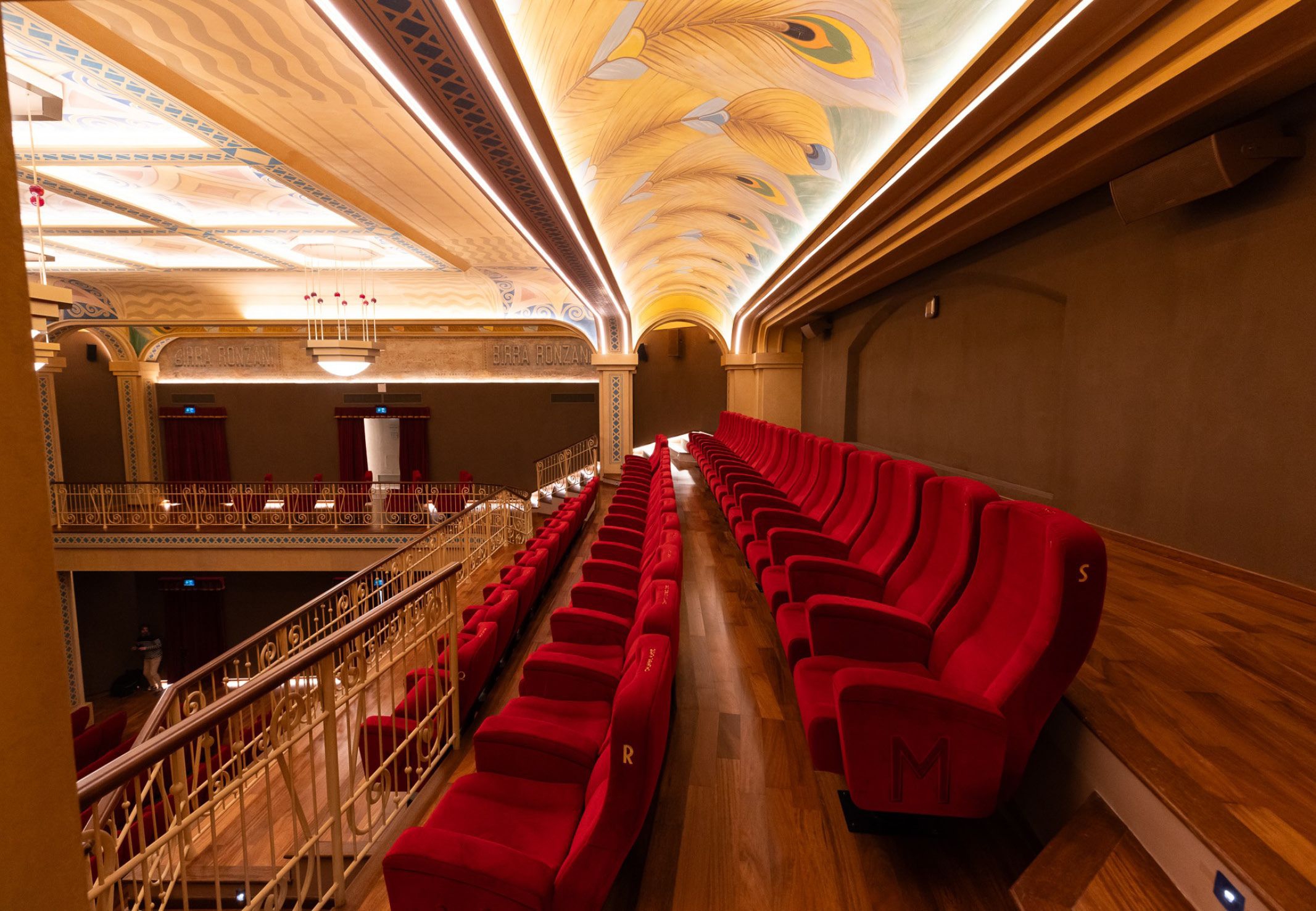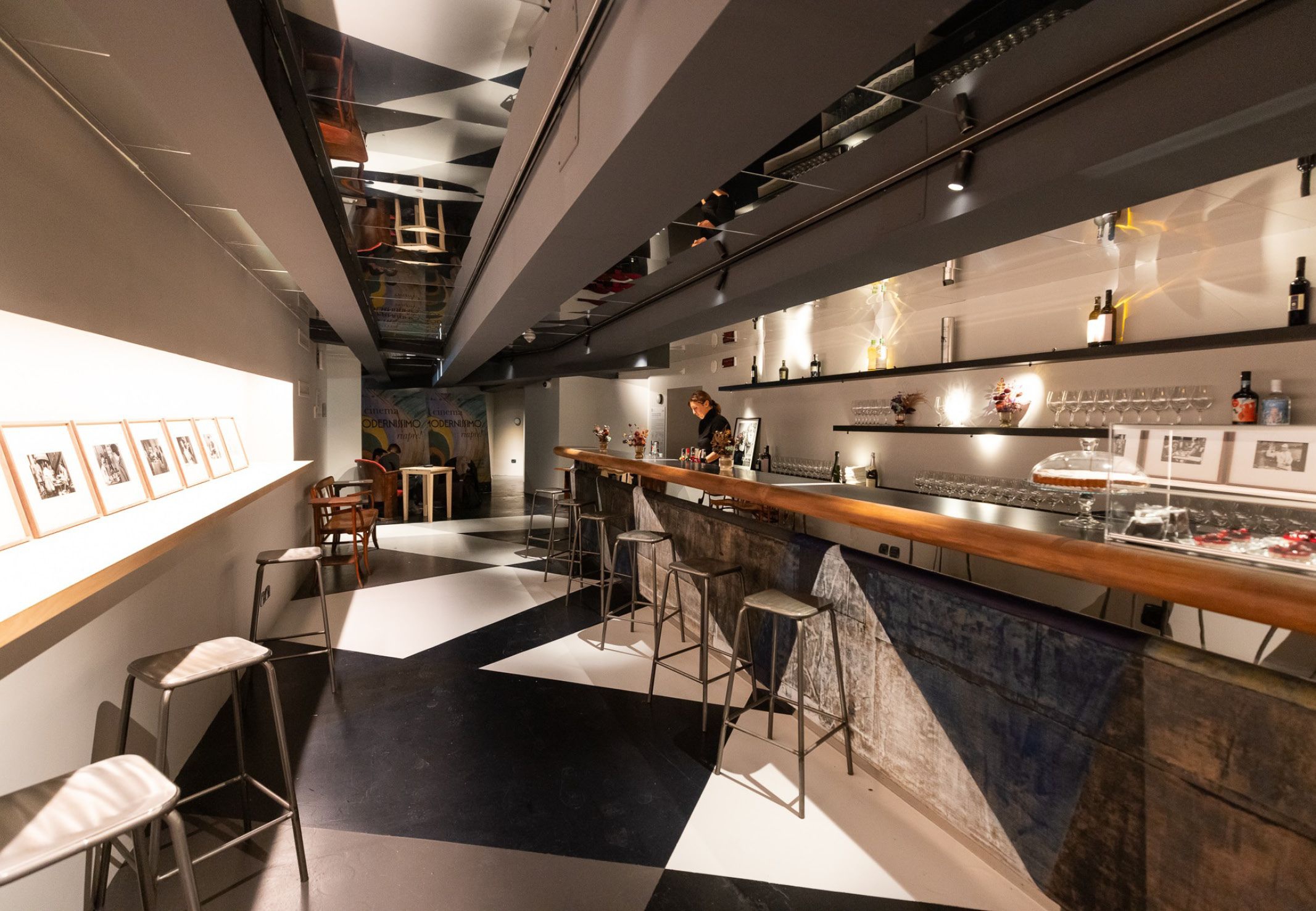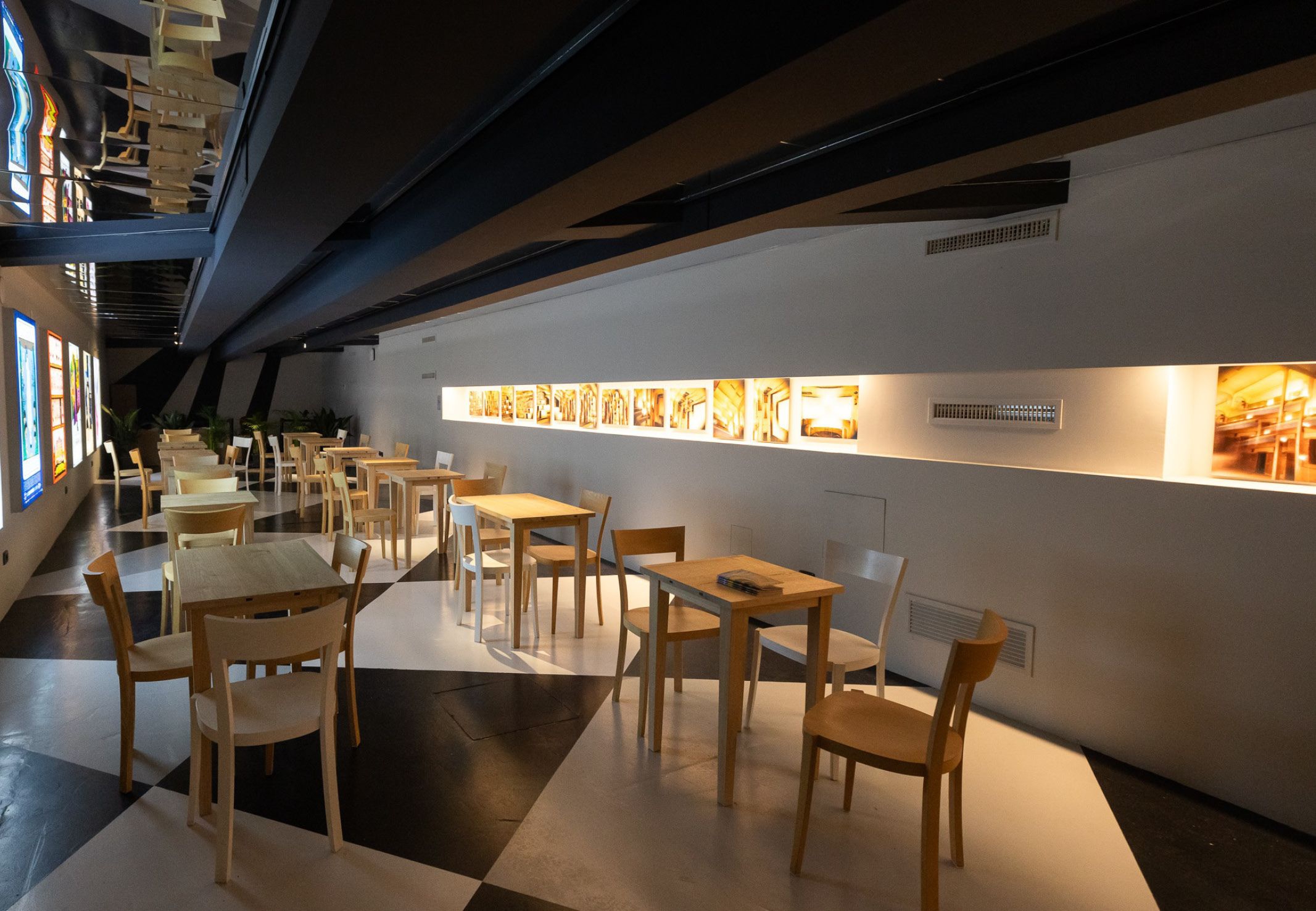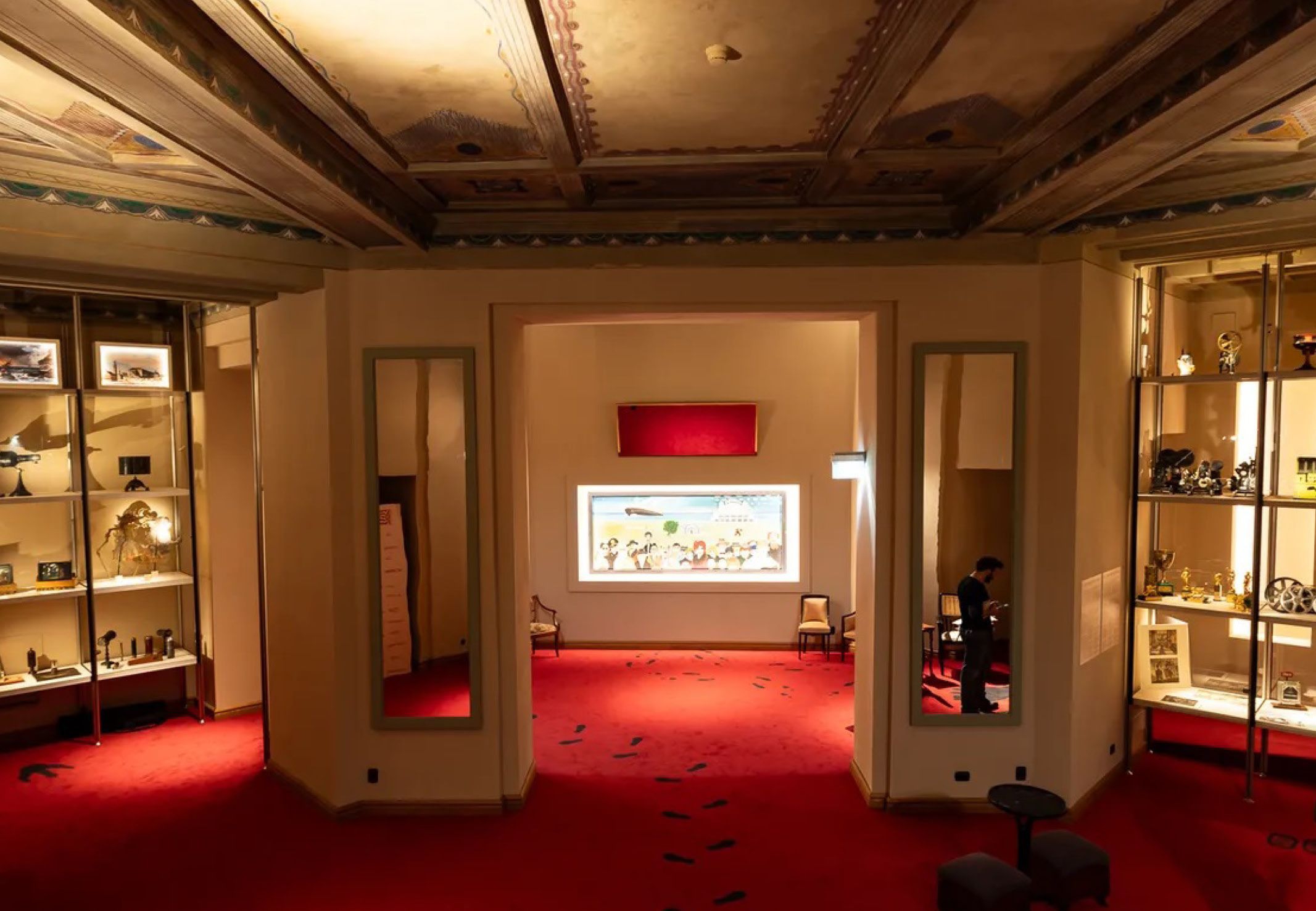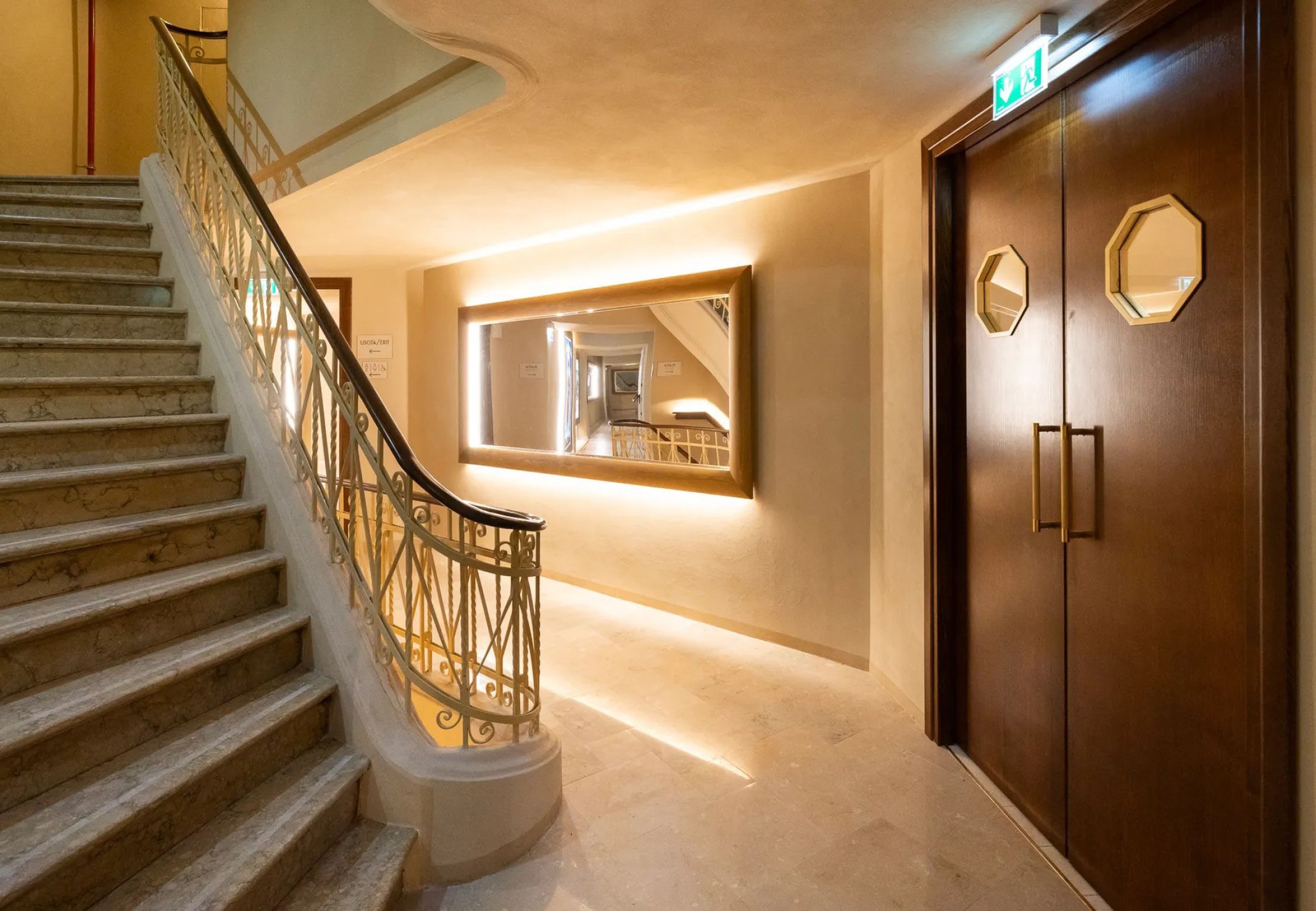
projects | Viabizzuno progettiamo la luce
discover all the Viabizzuno designs and projects in collaboration with the world’s leading architects and designers.


cinema modernissimo
place:bologna, italy
project:modernissimo srl, artistic curator giancarlo basili
buyer:fondazione cineteca di bologna
lighting project:marionanni, Viabizzuno
cinema modernissimo opens its doors once again, thus returning to the city a place that, despite its disappearance for fifteen years, has remained a treasured memory of bologna’s residents. this restoration closes a circle by bringing back to life two underground worlds, precisely the underpass in via rizzoli, which has already been turned into a permanent exhibition space, and cinema modernissimo. hence, an important cultural dimension has been sealed, symbolised by a stretch of via emilia, which is now visible to the public as a result of reopening the area. the memory of the city's multi-millennial history has thus been revived.
today, cinema modernissimo is located in a space created in the early 20th century. indeed, the first project for the construction of an underground theatre dates back to 1912. as part of the great renewal project for bologna's city centre, the foundations were laid for palazzo ronzani. this multifunctional building, a stronghold of bologna’s modernity, was conceived by the futuristic project of architect and stage designer gualtiero pontoni, commissioned by alessandro ronzani, a renowned industrialist of the namesake casalecchio beer. the underground theatre, with dual access from via rizzoli and piazza re enzo, was designed to seat an audience of about two thousand persons. however, its particular architectural and structural traits caused several issues with permits and the site only opened in 1921.
the theatre’s redevelopment project, which commenced in 2014, was signed by the municipality of bologna, by fondazione cineteca of bologna, and by emmegi cinema, the building’s owner. in the following years, the società modernissimo foundation launched the project. considered a challenge, it began to take shape in 2020 with the start of works. the lighting design was developed by marionanni with Viabizzuno.
the atmosphere you breathe when walking through the underpass that connects the city to the underground city is authentic. looking back in time to the original modernissimo theatre, the role of artistic curator was assigned to giancarlo basili, one of the most authoritative set designers in the italian cinema scene. gian luca farinelli, director of cineteca di bologna, explained the reasons for this choice: “why a set designer and not an architect? because the modernissimo theatre had already been given an architectural structure, while we needed an artist to make us dream, and to turn the site into an amazing place where we could step into the atlantis of cinema”. giancarlo basili has followed a dual track by maintaining the original traces and, then, referring to the few photographs and many drawings of the period project, he has conceived a site of extraordinary beauty to celebrate cinema, while maintaining the flavour of a hundred years ago.
the dual architectural volume beneath the historic palazzo ronzani is a time machine. every historical detail has been preserved and combined with a contemporary interpretation of the space through Viabizzuno lighting, thus creating a unique combination of past and future.
the symbol of this convergence, in terms of lighting, is the suspended chandelier that dominates the main hall from four points. the original tapered shape and the historic octagonal brass base have been retained with a modern touch provided by the imposing 1.2 m hemisphere, which fills the chandelier's cavity. the handrails on either side of the great hall also embody historical authenticity, high technology and functional features as a result of Viabizzuno’s integrated light, which guides the audience without playing the protagonist.
the elegant foyer with its art nouveau flavour is embellished by traccia sistema, a bookcase system featuring integrated lighting and designed to display significant film objects, such as vintage movie cameras and international awards, including the golden lion awarded to marcello mastroianni. turned into an exhibition space featuring vintage posters illuminated by Viabizzuno light frames, the corridors take viewers on a journey through the history of cinema.
the lighting design has also addressed the other rooms opposite the foyer, precisely café pathé with traccia sistema, whose integrated spotlights create a cosy ambience by blending into the architectural volumes without neglecting the functional features required by the space, while glasses and bottles are located behind the counter on mensolona with micromen.
niches displaying photographs of the space prior to restoration works conceal c2 light blades integrated in sistema 094. the toilet area features an imposing long tiled wall with the words "cinema modernissimo" illuminated by n35 sospensione, while intè spotlights are integrated into the plasterboard in the corridor.
renovation works have revealed another aspect of the city's history. indeed, cinema modernissimo is located near the decumanus maximus of the roman city of bononia. the unearthed large cobblestones have, therefore, been integrated into the cinema space and enhanced by means of a microtraccia with spotlight 38.
cinema modernissimo is a journey through history, culture, art and technology.
scroll

